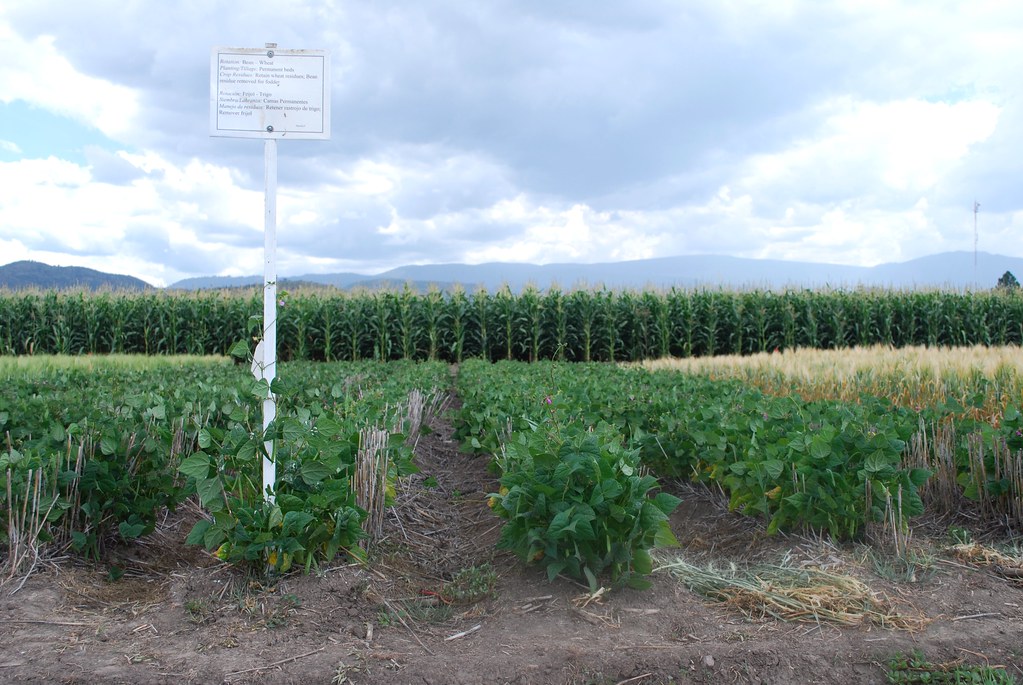In the enchanted realm of home vegetable gardens, where earth and sun conspire to yield bountiful harvests, lies a sacred secret: crop rotation. Like a harmonious dance between the seasons, this ancient practice holds the key to unlocking the full potential of your garden’s soil. Step into a world where plants play their part, and nature’s orchestration cultivates a symphony of flavors. Today, we embark on a journey to explore the importance of crop rotation, revealing the magical secrets that lie within and beneath each turn of the soil. Get ready to witness the wonder of your garden flourishing like never before. Welcome to the land of crop rotation.

Enhancing Soil Health: The Key Benefits of Crop Rotation in Home Vegetable Gardens
Crop rotation is an essential practice for any avid home gardener seeking to optimize the health and productivity of their vegetable garden. By systematically changing the placement of crops each growing season, numerous benefits can be achieved:
– Disease Prevention: Crop rotation disrupts the life cycles of pests and diseases, reducing the likelihood of their buildup in the soil.
- Nutrient Balance: Different crops have varying nutrient requirements. By rotating crops, the soil can maintain a better balance of nutrients, preventing depletion.
- Weed Control: Crop rotation can help control weeds by breaking their life cycles and reducing their ability to establish in the garden.
By incorporating crop rotation into your gardening routine, you can ensure a thriving, disease-resistant, and bountiful vegetable garden for years to come.
Optimizing Yield and Pest Control: Effective Strategies for Implementing Crop Rotation Techniques

In order to maximize crop yield and minimize the impact of pests, implementing crop rotation techniques is essential. Here are some effective strategies to optimize your yield and control pests:
- Diversify crop types: Rotate crops based on their nutrient requirements and susceptibility to pests. This helps break the pest life cycle and reduces the risk of crop-specific diseases.
- Include cover crops: Planting cover crops like legumes can improve soil fertility, control pests, and suppress weeds, enhancing overall crop health.
- Plan crop sequences: Develop a well-planned rotation schedule, considering the duration and specific requirements of each crop. This can prevent the build-up of pests and diseases.
- Monitor and adapt: Regularly assess crop health, pest activity, and yield data. This enables timely adjustments to strategies and interventions if necessary.
Implementing these crop rotation techniques can promote sustainable farming practices while optimizing yield and enhancing pest control.
Concluding Remarks about The Importance of Crop Rotation in Home Vegetable Gardens.
In the cycle of life, every organism gets its fair share of sun, rain, and nutrients from the Earth. From the tiniest blade of grass to the mightiest oak tree, each one thrives in its own unique way. And just like the intricate dance of nature, our home vegetable gardens require a similar rhythm to reach their fullest potential. That rhythm, my friends, lies in the art of crop rotation.
As we bid farewell to this article, we are reminded that crop rotation is more than just a horticultural technique, it is a sustainable practice that ensures the vitality and health of our beloved vegetable patches. By embracing this ancient wisdom, we unlock a world of benefits that not only nourish our plants but also protect our soil from depletion and pests.
Through the careful rotation of crops, we nourish our gardens and give them the chance to rejuvenate. We breathe new life into the soil, replenishing essential nutrients and reducing the risk of disease and pest infestations. Imagine the harmonious symphony of diverse crops, each playing its part in building a resilient and bountiful ecosystem, where no single harvest drains the Earth’s resources beyond repair.
By embracing this simple yet powerful technique, not only do we support the health and longevity of our gardens, but we also learn valuable lessons in harmony and balance. Just as nature thrives when it finds its perfect rhythm, so too do our vegetable gardens. And as we reap the vibrant rewards of our labor, we can take pride in knowing that we are part of a virtuous cycle, rooted in sustainability and stewardship of the land.
So let us embrace the ancient wisdom of crop rotation, weaving together a tapestry of diversity and abundance. Let us be the stewards of our own little patch of earth, nurturing it with love and care. For in doing so, we not only nourish ourselves and our families but also contribute to the interconnected web of life that sustains us all.
With this newfound knowledge, let us venture into our gardens, excited to experiment, discover, and witness the beauty that unfolds when we respect the intricacies of nature. Let us cultivate our vegetable gardens with the wisdom and love of a seasoned gardener, uttering that age-old incantation: Crop rotation, we salute you!
